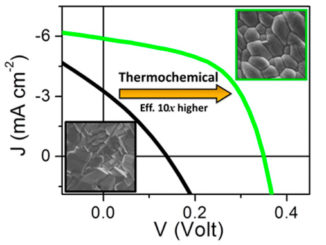
Writers: L.X. Lovisa and J. Andrés and L. Gracia and M.S. Li and C.A. Paskocimas and M.R.D. Bomio and V.D. Araujo and E. Longo and F.V. Motta
Keywords: ZrO2:RE; Photoluminescence; DFT calculations
Abstract: Abstract Rare-earth (RE) element-based materials for optical applications have received increasing attention owing to the emission properties of \{RE\} ions, which render these materials suitable for use in color displays, lasers, and solid-state lighting. In the present work, ZrO2:RE (RE = Tm3+, Tb3+, and Eu3+) powders were obtained via complex polymerization, and characterized by means of X-ray diffraction (XRD), Raman spectroscopy, UV–visible absorption spectroscopy, and photoluminescence measurements. The \{XRD\} patterns and Raman spectra revealed the tetragonal phase of ZrO2 co-doped with up to 4 mol.% RE3+ and stabilization of the cubic phase, for up to 8 mol.% RE3+. In addition, the photoluminescence measurements revealed simultaneous emissions in the blue (477 nm), green (496.02 nm and 548.32 nm), and red-orange (597.16 nm and 617.54 nm) regions. These emissions result from the Tm3+, Tb 3+, and Eu3+ ions, respectively. Energy transfers, such as 1G4 levels (Tm3+) → 5D4 (Tb3+) and 5D4 levels (Tb3+) → 5D0 (Eu3+), occurred during the emission process. Calculations based on density functional theory (DFT) were performed, to complement the experimental data. The results revealed that structural order/disorder effects were generated in the cubic and tetragonal ZrO2 phases in the ZrO2:Eu3+ powders, and changes in the electronic structure were manifested as a decrease in the band gap values. The chromaticity coordinates of all the samples were determined from the \{PL\} spectrum. The coordinates, x = 0.34 and y = 0.34, of the ZrO2:8%RE sample corresponded to a point located in the white region of the \{CIE\} diagram and color correlated temperature (CCT) was found to be 5181 K. More importantly, the present results indicate that ZrO2:RE powders constitute promising photoluminescent materials for use in new lighting devices.




